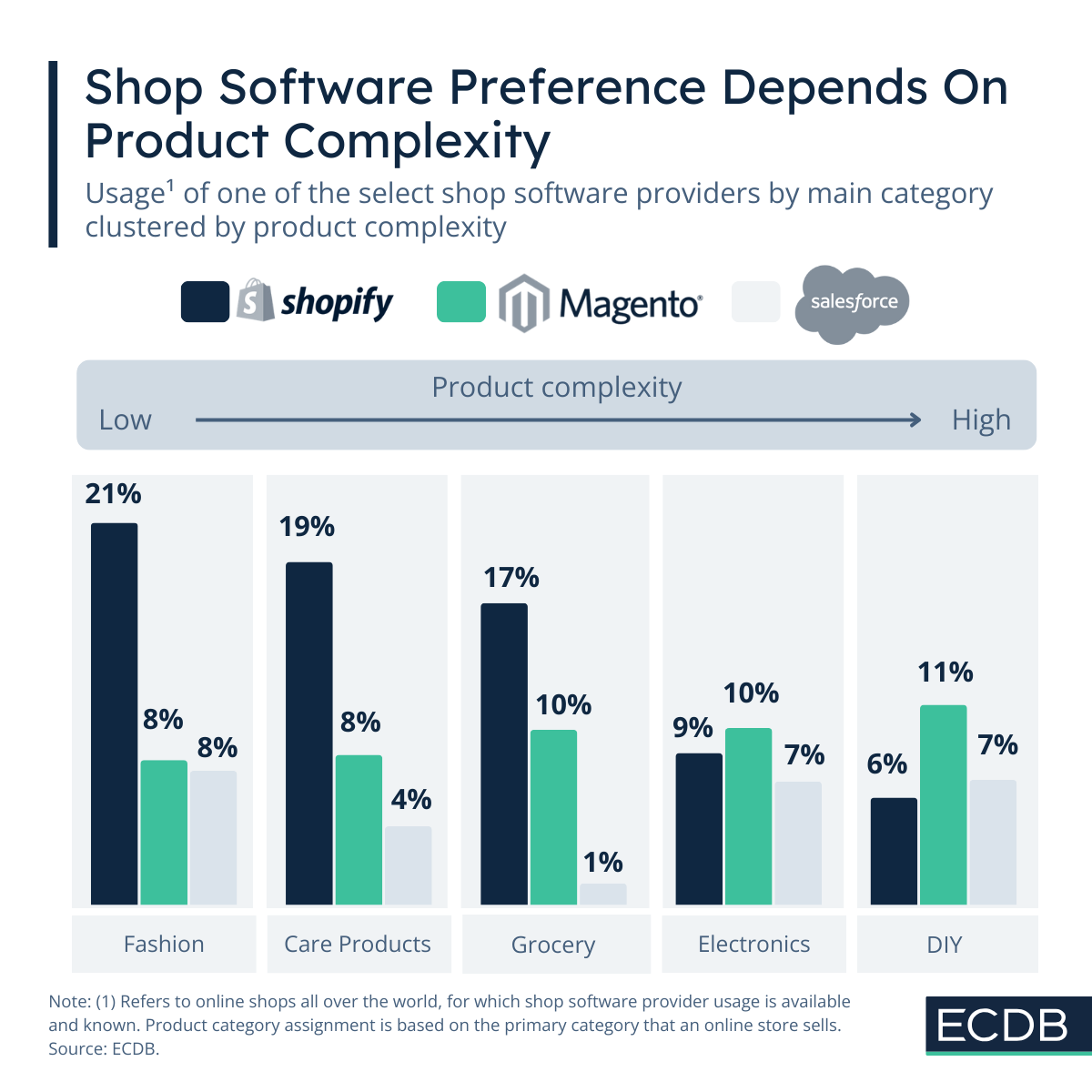Shop software is a hot topic in eCommerce. It is used by businesses worldwide and is a competitive industry for providers. In previous posts, ECDB has shown the regional distribution of shop software and how the preference for providers is more fragmented in some markets, such as in Europe.
The use of shop software depends not only on regional distribution, but also on the types of products that online stores sell, which has an important impact on the functionality of the software — some software is better suited to handle one category than another.
The key element here is product complexity: The types of choices users can make on the site to customize their products are determined by the setup and functionality of the shop software.
How Does Product Complexity Affect the Use of Shop Software?
The functionality of shop software varies depending on the provider. Between the two largest providers, Shopify and Magento, Shopify is easier to use and has a subscription-based cost structure that includes add-on features which are app-based. The huge benefit is that no coding skills are required to use the software, the drawback is that customization options are limited.
Magento was acquired by Adobe, which released a paid enterprise version of the software under the name Adobe Commerce. Magento is essentially free software, but requires programming skills to take advantage of its many features. It also becomes much more expensive when add-ons and tools are purchased. Magento is therefore more suitable for online stores with more complex configurations.
Shopify Dominates in Fashion, Care & Grocery
Shopify performs strongest in the Fashion category. This means that 21% of online stores with Fashion as their main category use Shopify. Magento and Salesforce are used much less by Fashion-dominant online stores, with 8% each.
The same logic applies to Care Products, where 19% of online stores use Shopify, while Magento lags with 8% and Salesforce with 4%. Fashion and Care Products tend to have less need for customization than other categories: Unless it’s a DIY-style fashion store, items are in the same pattern, fabric, and cut; the only difference for customers is the size. Bags & Accessories are even simpler as they are usually sold in one size.
Grocery is a moderately complex category. It is easy to standardize with fitting delivery and offerings like grocery boxes, but it can quickly become complex when you factor in warehousing, real-time inventory updates and freshness barometers. As a result, grocery is a mixed bag: Online stores that sell Grocery as a primary category are less likely to use Shopify (17%) than those that sell Fashion or Care Products. They are more likely to use Magento (10%) than the other two, which hints at a higher need for customization.
Magento Enables More Detailed Customization
The tables turn for other categories: Magento leads in adoption by online stores that sell Electronics (10%) and DIY (11%) as a main category. Shopify is less widely adopted in both, with 9% for Electronics and 6% for DIY.
Product complexity can account for this circumstance, because electronic devices and DIY products like tools and supplies can be broken down into many components, material, and compatibility with other work equipment. All this usually requires a more complex setup for an online store, including bulk ordering options and other configurations that customers demand.
Salesforce, on the other hand, is strong in categories where customer experience, brand loyalty, and personalization are key. While its share in categories like Fashion, Care Products, Grocery, Electronics, or DIY is relatively low, this doesn’t mean it's out of the game — rather, it's more commonly chosen by large, experience-driven brands that operate at scale.










